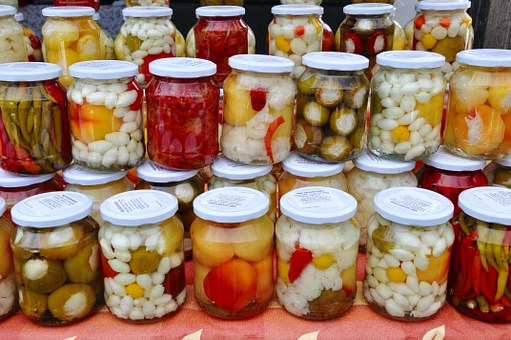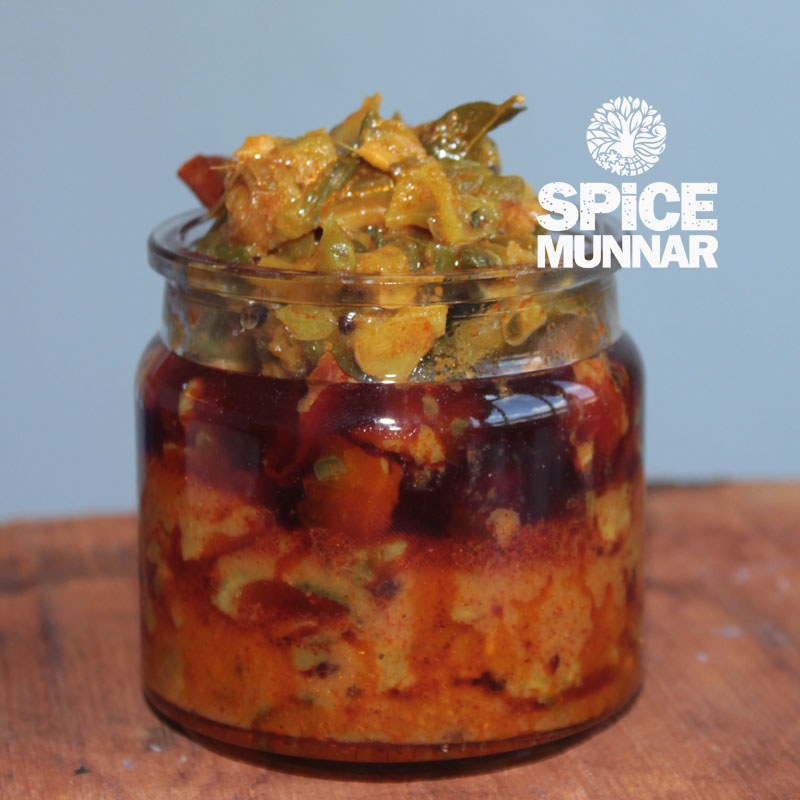Pickles have been used right from ancient times. They date back as far as 2030 BC. Even then cucumbers from native India were pickled in the Tigris Valley. They find mention in the Bible and are rumored to be one of Cleopatra’s prized beauty secrets. Pickles have even made appearances in Shakespeare’s writing.

The word “pickle” comes from the Dutch pekel or northern German pókel. It means “salt” or “brine,” which are two very important components in the pickling process. Pickling was considered a necessity, as it was the best way to preserve food for a long period of time. They filled the stomachs of hungry sailors and travelers, while also providing food for families during the cold winter months.
Pickled vegetables were regularly used by Jews living in the Ukraine, Poland, Lithuania, and Russia to supplement the bland bread-and-potato diet of these cold weather countries. It was also an autumn custom for Ashkenazim to fill barrels with cucumbers, beets and shredded cabbage and ferment it into pickles to last through the long cold winter until spring.
The immigrant eastern European Jews introduced Kosher Dill pickles to America during the late 1800s and early 1900s. Cucumbers were washed, then piled in large wooden barrels along with Dill, Garlic, spices, Kosher salt, and clean water. Pickles were sold on pushcarts in the New York City & Jewish-owned shops selling pickles straight out of the barrel became popular.
The 1850s marked the invention of two essential canning tools & home pickling became much easier and more sanitary. The Paraffin Wax invented by the Scottish chemist James Young helped to create a seal for food preserved in jars. John Mason developed and patented the first Mason jar to preserve pickles a few years later. These jars were made from a heavyweight glass that was able to tolerate the high temperatures used in canning and processing pickles.
Each area of the world has its own favorite variety of pickles! While sweet pickles made with Vinegar, Sugar and Spiced syrup was the contribution of the English people, Sauerkraut made of Lacto-fermented cabbage was introduced by the Eastern Europeans. Spiced cornichons with heavy pâtés and pungent cheeses was made by the French & the Russians pickled Tomatoes. The Korean pickle is called Kimchi. The Japanese pickle Plums and Daikon, and Italians pickle Eggplants and Peppers. In the Middle East, Pepper, Olive & Lemon pickles are a must with every meal.

In India, everyone follows a tradition of completing a meal with curd rice and pickle. There are many varieties including mango pickle, bitter guard pickle, lemon pickle, amla pickle, and many more. Non-veg pickles include tuna fish pickle, prawns pickle… You can visit spicemunnar.com to know different varieties of pickles and buy online.
